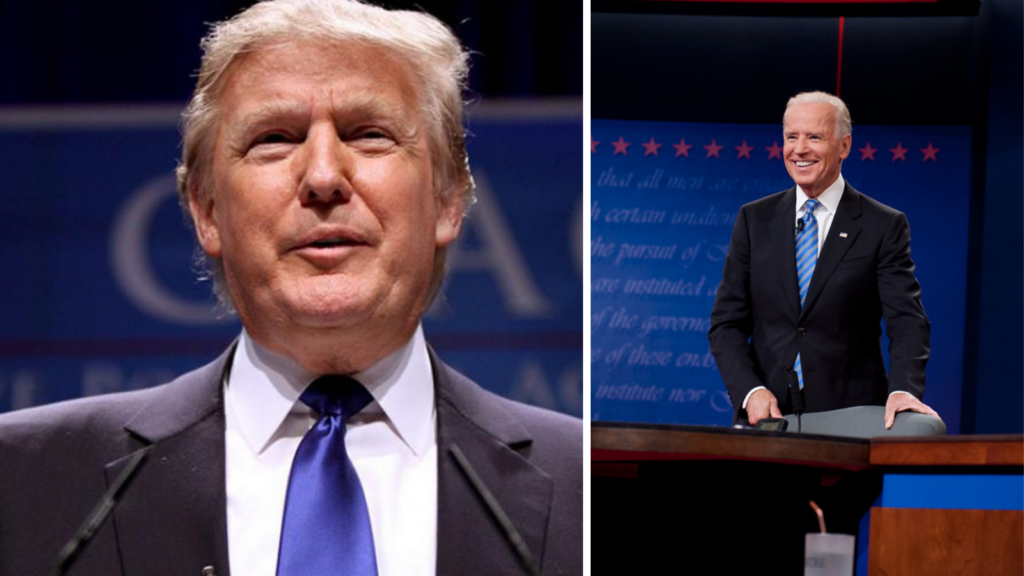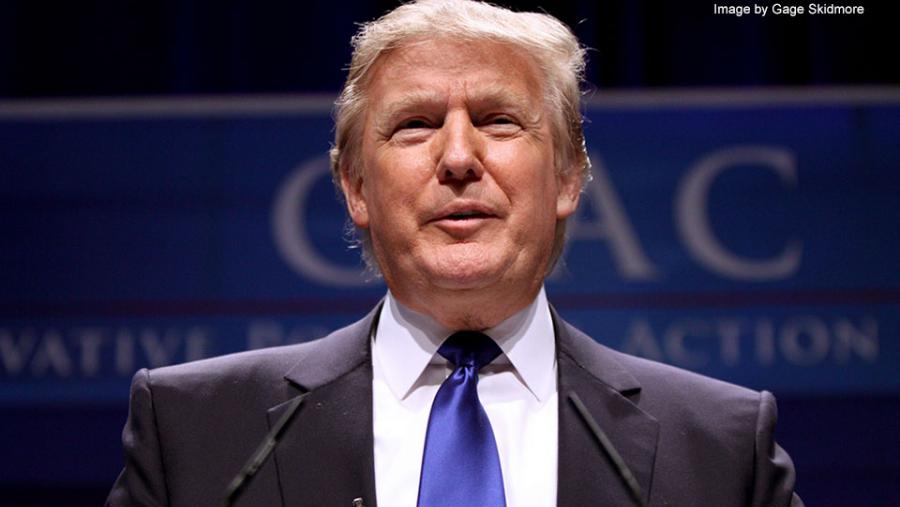
How can we develop a better, more inclusive leadership class that is capable of finding solutions to complex problems when our political culture is dominated by language that focuses not on what candidates say or stand for—but on the fact that the “frontrunner” failed to deliver a “knockout punch”?
Donald Trump’s boorish and bulldozer-like tactics in the first presidential debate with Joe Biden ensured most of the post-debate commentary would focus on the form of their interchange and not the substance.
But even before this debacle, anyone who thought that presidential debates were primarily about issues, or who has the best plan to enact policy that will affect the lives of ordinary Americans, hasn’t been paying attention. For decades, these debates have been theatrical events better critiqued by TV and theater critics—or sports writers—than political analysts.
Determining who wins and who loses is primarily about image and narrative, which is why the smartest or most knowledgeable candidate rarely prevails. As New York Times columnist Charles Blow writes,
“The debates test the performative aspect of leadership: stamina, mental agility, wit. Policy is discussed, but rarely if ever in greater depth than what the candidates have already published in some way. Times have changed.”
Like so much else in our contentious era, presidential debates have become yet another stage for a culture war battle around questions of gender and racial identity.
Specifically, since 1980 and arguably even earlier, presidential debates have served as a kind of metaphorical boxing match in which two candidates—usually both white men—offer competing and contrasting versions of white male leadership. Commentators score the debates not on whose ideas were presented more coherently and convincingly, but on who “landed a jab,” who “parried an attack,” and what that said about their poise, toughness or moxie.
This method of measuring success or failure is biased toward male candidates who adopt traditional gender beliefs and styles, because it equates pugilistic skill with leadership ability in a way that tends to favor aggressive (white) men.
Donald Trump’s methodical trouncing of his numerous rivals in the 2016 GOP primary debates largely through attacks on their manhood will long be studied as a classic of this genre. As the television critic James Poniewozik writes after Trump’s performance against Biden, “Donald Trump has always approached debates like a guy in a bar fight looking for a bottle to break.”

Trump’s antics were an extreme example of how the original idea of debates as formal contests about ideology and ideas have become more explicitly about competing versions of white manhood.
Barack Obama’s debates with John McCain in 2008 and Mitt Romney in 2012 disrupted the historical pattern, because although the contests were still between two distinct versions of masculine leadership, one was Black and the other white. Obama’s Blackness made visible the whiteness of all previous presidential debates.
Hillary Clinton’s debates with Donald Trump in 2016 were especially notable because, as a woman, she made visible the fundamentally gendered nature of the spectacle.

For example, after their second debate numerous political reporters noted that Trump had “stalked” Clinton on stage, a form of disrespect never before seen in a presidential debate. Trump’s gendered bullying tactic put Clinton in the uncomfortable position of having to decide whether or not to call him on it; she would be criticized for either choice.
But debates between two male candidates are also centrally about gender—even if the pundits don’t notice this, or refuse to acknowledge what is hiding in plain sight. For example, any serious analysis of the Trump-Biden debates needs to address the competing versions of white masculinity embodied by the two candidates.
Trump’s entire political career is based on his over-the-top performance of a kind of throwback white masculinity that he cultivated for years in the New York tabloids and refined on reality TV.

In a country that is increasingly diverse ethnically and racially, in an era when feminism and LGBTQ rights have become decidedly mainstream, this performance is meant to resonate those he believes are his base voters.
One measure of Trump’s appeal to his supporters was evident in the chatter on the Fox News Channel after his first encounter with Biden. Regular Fox contributor Dan Bongino, a former Secret Service agent, applauded Trump’s aggressive behavior, calling him an “apex predator” who is “the Lion King.”
Top-rated host and Trump friend Sean Hannity agreed, stating “I’m old school. I like a fighter.”
Steve Cortes, a Trump campaign senior adviser, explained that the president’s crude conduct was appropriate because of the gravity of the issues facing the country. “We can’t have gentlemanly debates. We have to have brawls.”
And just has Trump has made his supposed “toughness” his signature political identity, Joe Biden has cultivated an image of a man who can be tough when it’s called for, but is more of a healer. Many of Biden’s supporters argue that his caring nature and capacity for empathy are desperately needed qualities for the leader of a country that faces an ongoing pandemic, as well as social unrest over racial injustice—and the protests against it.
One potentially positive outcome of the otherwise onerous and degrading moment of political theater that was the first Trump-Biden debate is that it made even more visible the ways in which Trump relies on his caricatured performance of aggressive white masculinity to solidify support among his largely (but not exclusively) white male base.
It remains to be seen whether this visibility can help to advance more sophisticated thinking about the critical role played by gender—specifically white masculinity—in presidential politics.
Sports Language “Functions To Construct a Masculine Ideal for Political Leadership”
How can political commentators incorporate deeper insights about gender into their work online, in television, radio and print? A good place to start would be for them to analyze—and not dismiss—the importance of sports metaphors in American political discourse.
Sports metaphors are a pervasive presence in our politics, in part because the language of sport functions to construct a masculine ideal for leadership at the height of political power. Metaphors carry great weight; they are not merely figures of speech.
According to the cognitive scientists and philosophers George Lakoff and Mark Johnson,
“Our ordinary conceptual system, in terms of which we both think and act, is fundamentally metaphorical in nature … The way we think, what we experience, and what we do every day is very much a matter of metaphor.”
This raises a series of questions about sports metaphors in U.S. presidential discourse:
- What effect does it have on our political system when mainstream commentary about politics is infused with the kind of language one hears every day on ESPN, in sports bars and in locker rooms?
- To what extent is bitter partisanship in the two-party system merely a political manifestation of the sort of quasi-tribalism routinely on display in sports rivalries?
- What are the particularly gendered features of sports/political discourse, and how do those influence which qualities in potential leaders are regarded as important?
For many decades, media have covered presidential debates with language taken directly from coverage of title bouts—complete with “Tale of the Tape” features that quantify a candidate’s strengths and weaknesses.
To this day, the political fortunes of various candidates are in part determined by whether or not political and media elites describe them as “heavyweights.” Anyone who follows contemporary U.S. politics even superficially knows that politicians and journalists constantly use boxing metaphors to describe political machinations.
There are countless examples of this: Before his first debate with Ronald Reagan in 1984, Walter Mondale was urged by Tip O’Neill to “come out slugging and come out fighting.”
The Los Angeles Times, during the presidential primary season in 2000, ran an article about a dramatic speech by Arizona Senator John McCain under the headline “McCain Delivers Hard Left to Christian Right.”
And in a lead-in to a jocular and substantive exchange on National Public Radio with commentator Michael Eric Dyson about the first George W. Bush—John Kerry debate in 2004, host Tavis Smiley stated:
“Once the lights and cameras are off, media pundits and voters are still left to decide which punches actually landed, which political jabs will be felt throughout the rest of the campaign.”
Later in the discussion Dyson, commenting on a previous debate performance by Kerry, said,
“I ain’t saying he was dancing like Ali, but at least he wasn’t plodding like some ham-fisted contender for the crown.”
Trump’s performance in the first debate has made boxing metaphors seem too genteel; his over-the-top alpha-male theatrics looked more appropriate for professional wrestling. But this embarrassing moment in our nation’s history could possibly catalyze positive changes.
Before the infamous Trump v. Biden debate, the presidential race in 2020 had reverted back to the historical norm for races between white men, in which gender was once again rendered invisible—or relegated to discussions about topics like the suburban women’s vote. Unlike media coverage of women candidates, very little coverage about the white male candidates focused on their gender, and how it affected their political appeal. Perhaps Trump’s outrageous behavior in the first debate will change that.
Maybe people will see more clearly how white male identity politics works in a way that diminishes its grip, especially on white male voters. One can only hope so. It is simply too difficult to develop a better, more inclusive leadership class that is capable of finding solutions to complex 21st century problems when our political culture is dominated by language that focuses not on what candidates say or stand for, but on the fact that the “frontrunner” failed to deliver a “knockout punch.”
You may also like:





